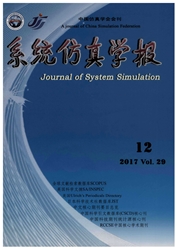

 中文摘要:
中文摘要:
在人机工效学中经常需要对人体的动作进行规划,用以评估产品的设计是否符合人机工效学,但是由于人体关节的冗余自由度使计算到达目标点的人体的动力学方法为非线性规划,无法求得最优解。提出了一种改进的RRT算法,用于计算满足给定约束条件的人体从目标点到达目的点的动作轨迹。该算法改进了其以往仅能根据简单动力学计算单质点物体运动属性的特点,并结合了精确的随机数生成和碰撞检测方法,根据多关节连接图形的特点重新设计了运动数据的存储结构和内容。改进的RRT算法可以直接应用于人体和机器人的动力学动作规划。
 英文摘要:
英文摘要:
In ergonomics, the motion planning method for human body is often used to evaluate the product design. But due to the redundancy freedom of the human's joint, the method is nonlinear planning and difficult to compute an optimization solution. An improvement algorithm for RRT was introduced which only computed the single particle object's movement and the algorithm could compute the path of human motion from start to target in given constf'aint. The method in random number generator and contact collision detection were improved. According to the character of articulated object, the data type and data structure were redesigned. The changed method can be used in human and robot motion planning directly.
 同期刊论文项目
同期刊论文项目
 同项目期刊论文
同项目期刊论文
 期刊信息
期刊信息
